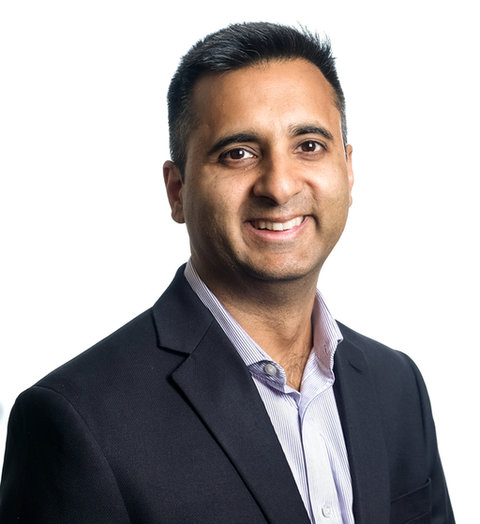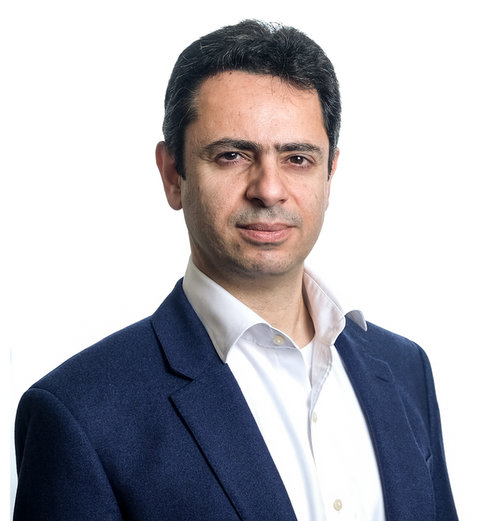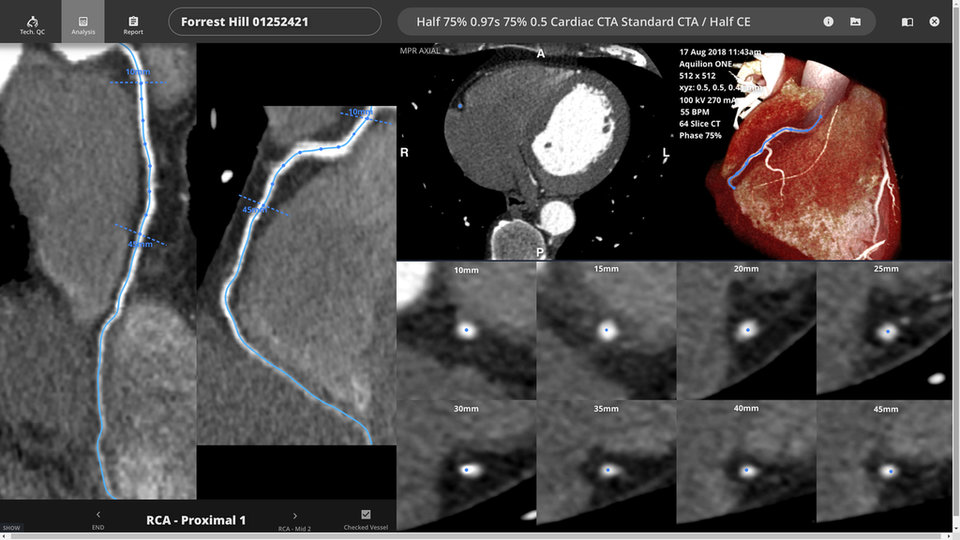Caristo
Developing Novel Imaging Biomarkers to
Improve Cardiac Risk Assessment
Caristo’s fat attenuation index (FAI™) is a novel radiomic biomarker that detects coronary inflammation and enhances cardiac risk assessment
By Stephanie Kreml
When Professor Charalambos Antoniades began studying the pathophysiology of atherosclerosis over 20 years ago, he had a different view of the involvement of perivascular adipose tissue than he does now. “My initial hypothesis was that the adipose tissue surrounding the coronary arteries was releasing molecules that damaged the coronary artery and caused atherosclerosis, and that by studying the adipose tissue, we could potentially identify drug targets that could protect the coronary artery,” he explains. “What I found was that due to atherosclerosis, the coronary artery itself produces chemical mediators that alter the texture and composition of the surrounding adipose tissue.”
Antoniades’ discovery shifted his focus from therapeutics to diagnostics and led to the development of a novel imaging biomarker shown to improve cardiac risk assessment. He then founded Caristo, where he now serves as Chief Scientific Officer, to bring this new technology to market.
Since roughly half of acute coronary syndrome (ACS) events occur in patients with unstable but non-obstructive atherosclerotic plaques, screening guidelines may miss a large portion of patients at risk. “There are many approaches and technologies employed in current cardiovascular diagnostics, but all of them share the same drawback: they are looking for the presence or effect of narrowings and blockages in the coronary arteries,” says Dr. Cheerag Shirodaria, Caristo’s CEO and co-Founder.
Unlike the current modalities used to assess cardiac risk, Caristo’s approach can characterize non-obstructive vulnerable plaques indirectly through the inflammatory changes in the adipose tissue surrounding the coronary arteries. The chemical signals released as a result of coronary inflammation cause the adjacent adipose tissue to decrease adipogenesis, and the tissue itself becomes more aqueous.
Fortunately, CT scans record these subtle attenuation changes in the perivascular tissue, but they aren’t necessarily visible to the naked eye. So Caristo’s team uses machine learning and AI techniques to tease out these differences and calculates a fat attenuation index (FAI™) to quantify the amount of inflammatory changes taking place.
Furthermore, Antoniades, along with an international team of researchers, demonstrated that perivascular FAI™ enhances cardiac risk prediction over and above current assessment with coronary CT angiography (CCTA) in a post-hoc analysis of a large prospective cohort who underwent CCTA. The team published the results of the landmark Cardiovascular RISk Prediction using Computed Tomography (CRISP-CT) study in The Lancet and presented it as a late-breaking science presentation at the European Society of Cardiology Annual Scientific Congress in 2018.
Shirodaria states, “The technology that Caristo has developed allows measurement of coronary inflammation to be accurately assessed from a routine CCTA in order to predict future cardiac risk with high accuracy.”
Quantifying Subtle Changes
While Caristo uses machine learning and AI in what are now routine applications, the company expands the frontier for how it uses this technology. “At Caristo, we are employing AI in different facets of our products,” says Shirodaria. “One area is to automate a lot of the image analysis that we currently need humans to do. This allows us to turn around scan analyses faster, and the results are less prone to human error.”
He goes on to explain, “However, the really exciting area [where] we are deploying AI is in advanced radiomics for deep phenotyping — this is where an AI algorithm can look at and quantify hundreds of different features in a standard medical image, undetectable to the human eye, many of which carry useful information on the disease [and] risk state of the tissues.”
Caristo’s team is truly on the forefront of this burgeoning field. “We had another late-breaking science presentation at the 2019 European Society of Cardiology Annual Scientific Congress, where presented the first ever radiotranscriptomics study in cardiology,” Shirodaria says. “In this publication, we harnessed the power of our unique transcriptomic bio-resource at the University of Oxford (over 1500 cardiac patients who are fully characterized from multiple perspectives, e.g. genetically and metabolically) to develop novel radiotranscriptomic signatures that predict coronary heart disease.” This approach is filling Caristo’s pipeline for new advances to come.
A New Field for AI
With FAI™ as a novel imaging biomarker, Caristo doesn’t see many direct competitors. “The obvious competitor in the CCTA space is Heartflow, as they are performing an AI analysis of CCTA scans, delivered with a SaaS [software-as-a-service] model,” Shirodaria points out. “However, their analysis uses computational flow dynamics to provide information on the coronary artery narrowings, whereas our technology focuses on perivascular adipose tissue.”
And by focusing on the changes in the perivascular adipose tissue, Caristo will help the field of cardiology gain more insight into early stage coronary disease, so cardiologists may intervene sooner in the disease process. The CRISP-CT study showed that including high perivascular FAI™ values along with standard parameters improved the discriminatory value of a CCTA-based risk prediction model for both all-cause and cardiac mortality. Furthermore, the information captured by the perivascular FAI™ is independent of coronary calcification or systemic markers of inflammation, such as hsCRP (high-sensitivity C-reactive protein).
An Independent Risk Factor
To further prove out their technology, Caristo is conducting more studies. Shirodaria says, “WE are collaborating with the Univrsity of Oxford in an ongoing, global prospective study, ORFAN [Oxford Risk Factors and Non-invasive Imaging], that aims to recruit 100,000 patients in the next few years, making it the largest prospective CCTA imaging study ever undertaken.”
As the company gathers more data, Caristo’s goal is to provide more tools to help physicians. But Shirodaria acknowledges, “The challenge for everyone is to not only convince regulators that AI algorithms can be trusted, but also to reassure physicians that AI will not replace them.”
Caristo is poised to enter the market as it expects to obtain FDA clearance and CE-marking this year. “Our first product, CaRi-Heart will be out very soon — it can analyze essentially any CCTA obtained in the last decade or so, quantifying the attenuation level of fat (and hence the inflammatory state of the adjacent arteries),” Shirodaria says. “As mentioned, all of our analyses are made on standard CCTA sequences; we don’t require any special software sequences or hardware.”
He explains, “The scan simply needs to be sent to us via our dedicated cloud portal, CaRi™-CLOUD. We will then send a report back to the referring physician which will ultimately contain an individualized risk prediction for the risk of a heart attack in the next 9 years.”
Ready for Market Launch


The technology that Caristo has developed allows measurement of coronary inflammation to be accurately assessed from a routine CCTA in order to predict future cardiac risk with high accuracy.
Dr. Cheerag Shirodaria
Founder and Chief Executive Officer

What I found was that due to atherosclerosis, the coronary artery itself produces chemical mediators that alter the texture and composition of the surrounding adipose tissue.
Charalambos Antoniades
Founder and Chief Scientific Officer
